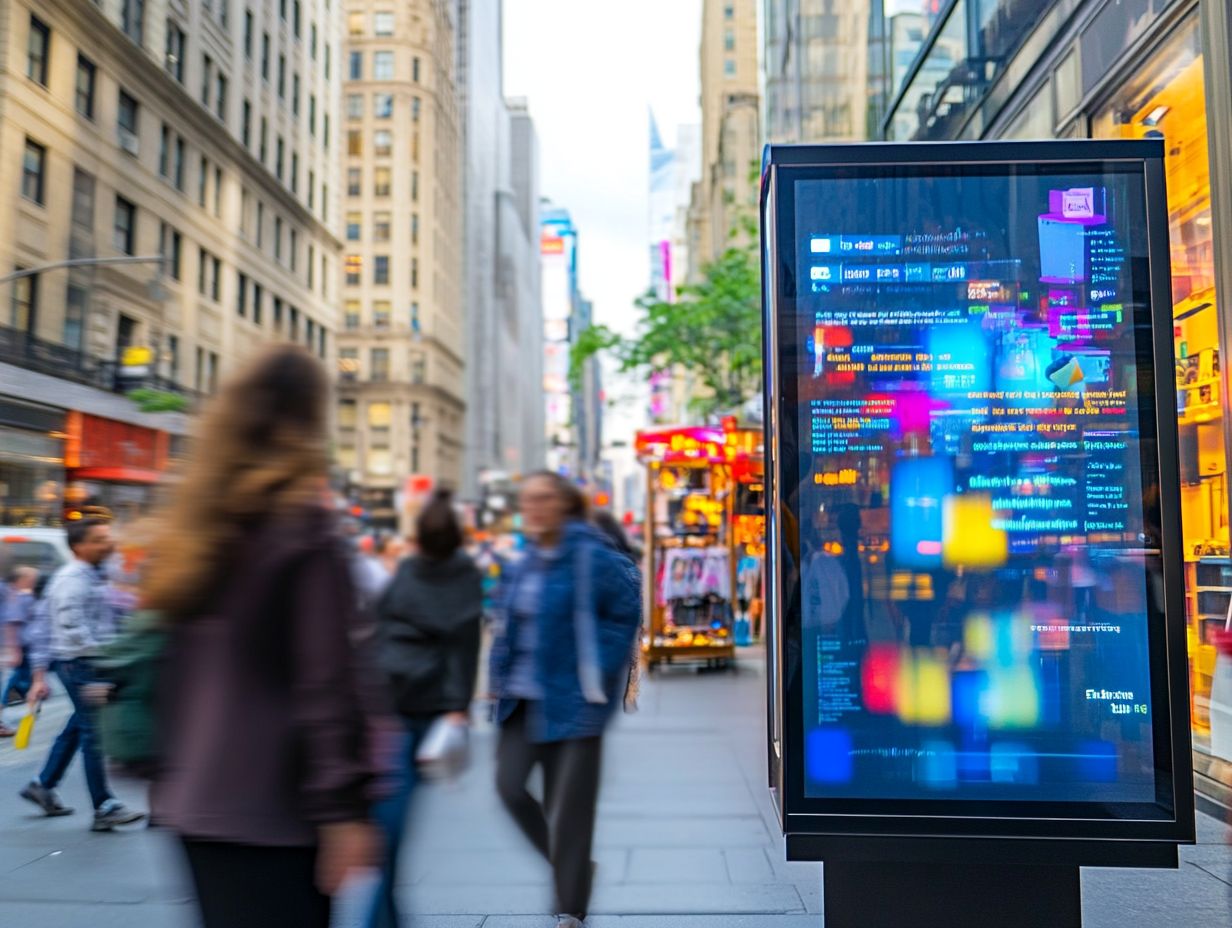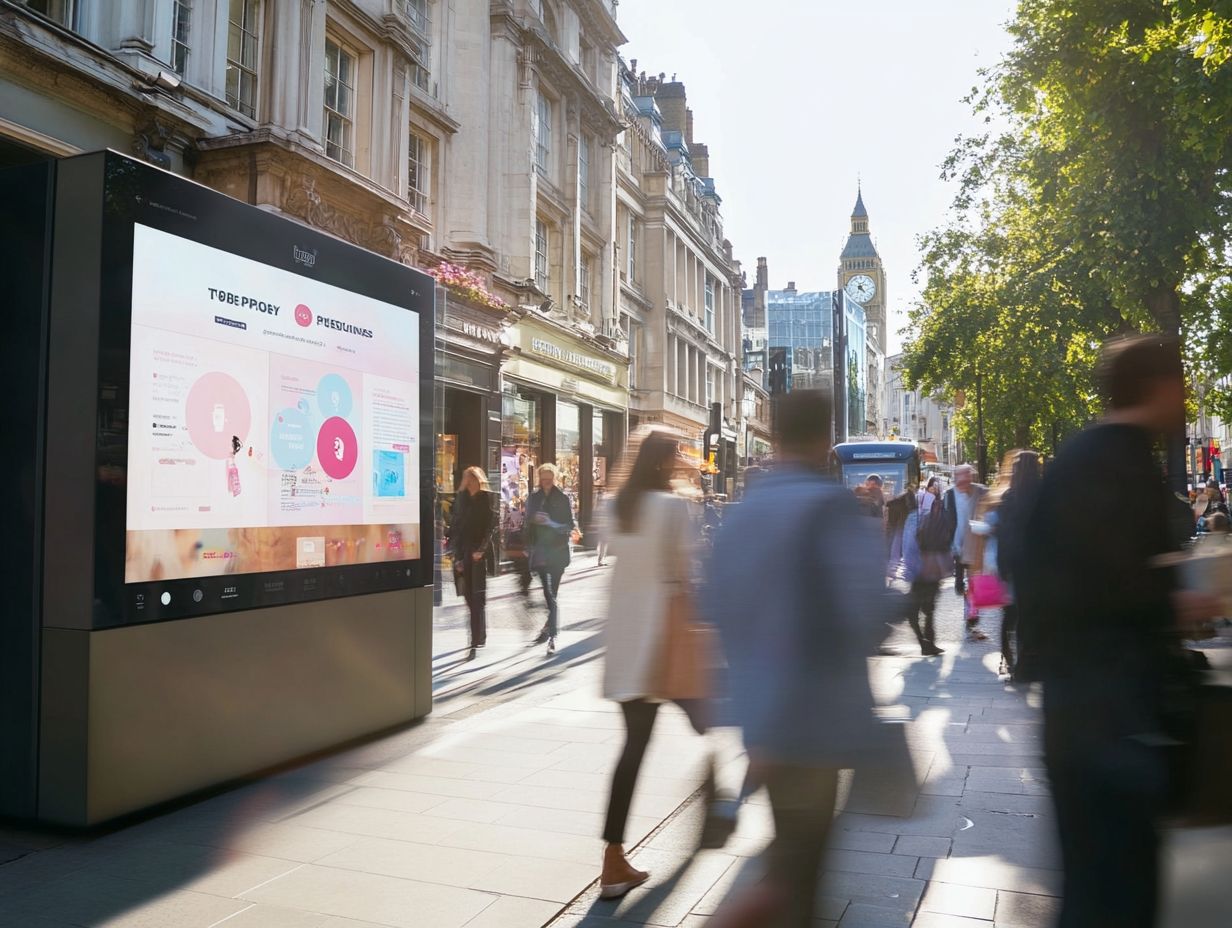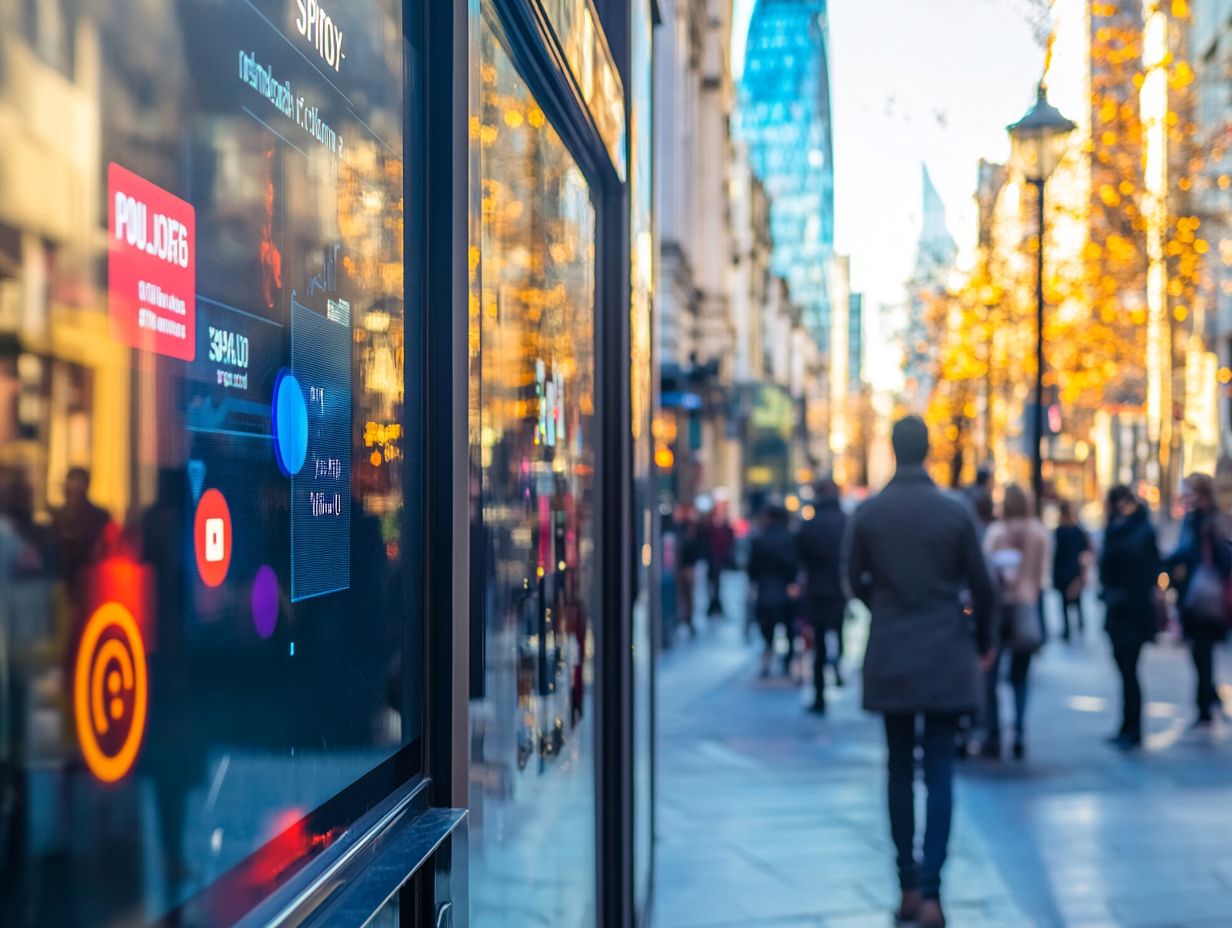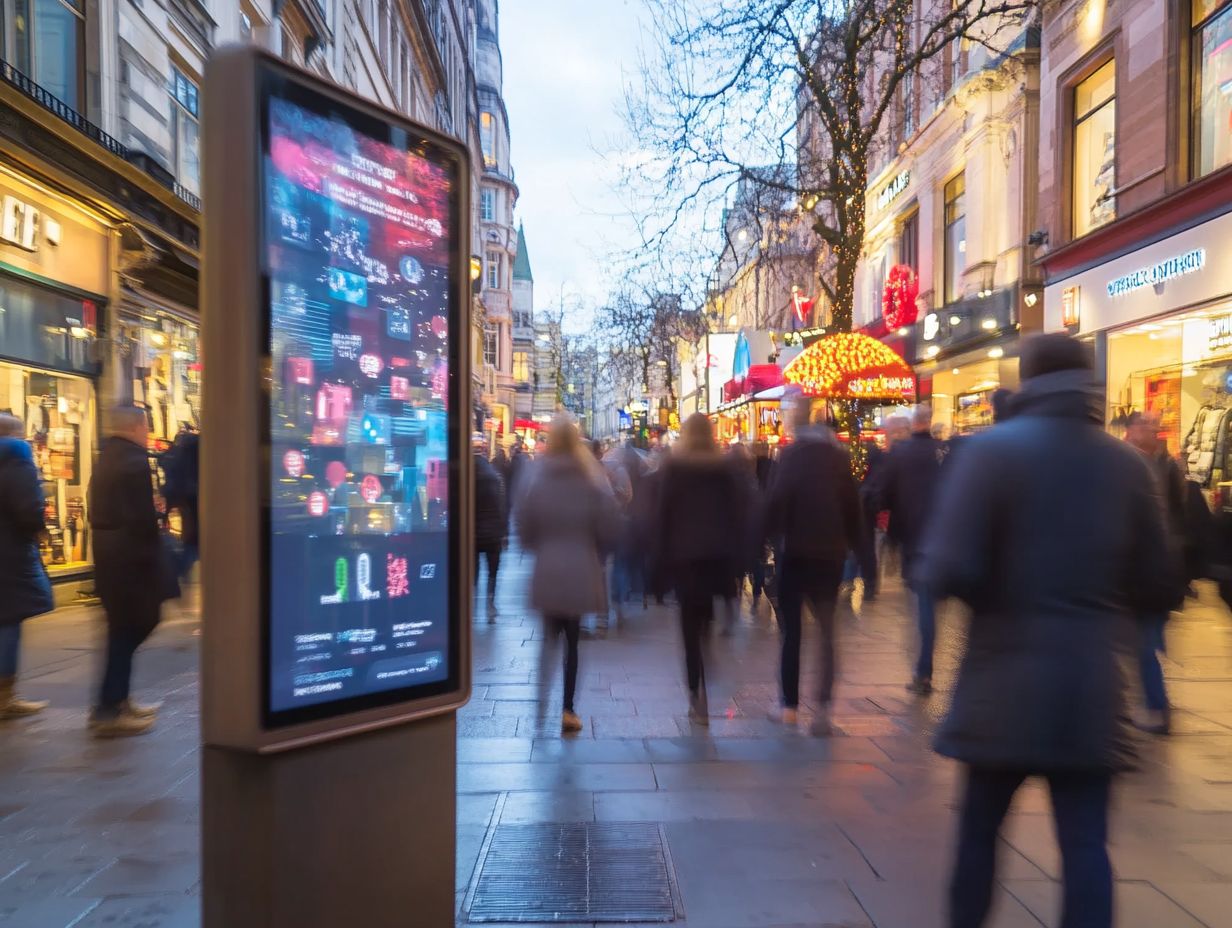Pop-up locations offer brands innovative opportunities to engage consumers in today’s increasingly competitive retail landscape. Selecting the ideal location is crucial for maximizing consumer engagement and brand optimization. This article examines the role of foot traffic analytics in determining the best sites for pop-up shops. By analyzing foot traffic data and location data, brands can identify high-traffic areas, gather demographic information, and optimize their engagement strategies. Additionally, this article explores how to leverage these powerful analytics to enhance the pop-up experience and achieve successful outcomes.
The Importance of Foot Traffic Analytics for Pop-Up Locations

Foot traffic analytics play a crucial role in the success of brand pop-up locations by offering valuable insights into consumer behavior and enabling data-driven decisions that enhance site selection, brand visibility, and overall retail strategy.
Location intelligence allows businesses to analyze customer footfall and traffic patterns, ensuring that pop-up strategies align with the preferences and habits of their target audiences. Additionally, understanding demographic analysis, site feasibility, and site suitability helps brands effectively position their pop-ups in optimal areas, maximizing customer engagement and sales conversion rates. Additionally, understanding demographic analysis and site suitability helps brands effectively position their pop-ups in optimal areas, maximizing customer engagement and sales conversion rates.
Understanding the Role of Location in Brand Pop-Ups
The location of brand pop-ups plays a crucial role, as it directly influences customer engagement, store performance, and overall site performance, all of which are essential for the effectiveness of marketing efforts targeted at specific customer demographics.
When choosing a location, brands should consider not only visibility but also a deeper understanding of spatial factors such as foot traffic, accessibility, nearby points of interest (POI), and surrounding urban planning.
For example, a site with high foot traffic in a busy city is likely to generate more brand exposure and awareness, while a pop-up in a quieter area may attract less attention.
Understanding the demographics of local customers can enable brands to offer products and services tailored to the needs of their target audience, ensuring that their offerings remain relevant and aligned with consumer preferences.
Analyzing traffic patterns and the characteristics of surrounding areas can reveal peak hours, seasonal trends, and days of the week when consumer activity is highest. This insight can significantly enhance the chances of creating memorable brand experiences that foster brand loyalty.
How Foot Traffic Analytics Can Help in Location Selection

Foot traffic analytics give the power to brands to make well-informed decisions regarding location selection by offering real-time data that reveals traffic patterns and potential customer interactions, thereby enhancing overall competitive analysis and market research.
These insights help businesses understand peak customer visit hours and the demographic diversity in specific areas, providing a clearer picture of where to establish pop-up locations based on geographic information systems (GIS) and visitor demographics.
By utilizing heat maps and movement trends, brands can identify popular zones, evaluate local competition, assess the seasonal effects on foot traffic, and conduct detailed traffic analysis.
Moreover, leveraging technology such as mobile data tracking enables a deeper analysis of consumer behavior in relation to competitors, enhancing competitive landscape analysis.
This ultimately guides brands in choosing the most promising sites that align with their target audience, improving overall operational effectiveness and driving higher engagement and ROI.
Using Foot Traffic Analytics for Optimal Pop-Up Locations
Brands can identify the optimal locations for pop-up stores by utilizing foot traffic analytics to analyze demographic data, shopping habits, and consumer insights.
This approach enables them to pinpoint areas with high foot traffic that align with the preferences of their target customers, enhancing brand interaction.
Analyzing Foot Traffic Data to Identify High-Traffic Areas

Analyzing foot traffic data is essential for identifying high-traffic areas that will enhance the success of pop-up sites and improve experiential marketing efforts. This is achieved through the use of heat maps and location-based analytics to visualize consumer movement patterns, supporting effective data collection and visualization.
The process begins with collecting data from a variety of sources, including mobile devices, Wi-Fi connections, and sensors installed in and around the area of interest, applying mobile analytics and offline analytics. By combining this information, businesses can gain insights into visitor patterns, such as peak visiting times, preferred routes, and overall shopper behavior.
Tools like Google Analytics, Placer.ai, and Blüpath provide visual representations in the form of heat maps, which illustrate the intensity of foot traffic in a given area over specific time periods, aiding in effective data visualization and spatial analysis. These insights enable businesses to strategically position their pop-ups in areas with the highest potential for consumer exposure, thereby increasing interaction, customer experience, and sales.
Utilizing Demographic and Behavioral Data for Targeted Pop-Up Locations
Demographic and behavioral data are essential for determining targeted pop-up locations and supporting audience segmentation. This information enables brands to segment their marketing efforts according to specific audience segments based on consumer insights, market segmentation, and behavioral data.
Maximizing the Benefits of Foot Traffic Analytics for Brand Pop-Ups

The benefits of foot traffic analytics for brand pop-ups can be maximized by leveraging insights to enhance event marketing strategies, boost customer retention, and improve overall performance metrics for each location, supporting marketing optimization.
Implementing Changes Based on Foot Traffic Analytics Insights
Implementing changes based on insights from foot traffic analytics is essential for enhancing site performance and maximizing sales, as data-driven decisions allow brands to effectively adapt their strategies and optimize marketing performance.
Analyzing customer movement patterns, dwell times, and travel paths within a physical location provides brands with valuable insights into which products and areas of the store generate the most interest and engagement, supporting visual merchandising and customer journey analysis. With this information, brands can strategically position these products to maximize exposure and sales, enhancing brand activation.
For instance, if analytics reveal that a particular area of a pop-up store attracts the most traffic, brands can adjust the layout or inventory in that section accordingly, improving site metrics and site analysis. Understanding peak traffic times enables brands to allocate resources more effectively, ensuring that staff are responsive and engaged, which ultimately enhances the customer experience, improves conversion rates, and supports sales optimization.
Continuously Monitoring and Adjusting Pop-Up Locations for Optimal Results
Continuous monitoring and adjustment of pop-up locations are essential for achieving optimal results, as this practice enables brands to remain responsive to location trends, fluctuations in traffic analysis, and market research.
By understanding peak customer visit hours, brands can adjust labor and inventory levels to meet demand effectively, improving store visibility.
Foot traffic analytics help identify changes in customer demand and preferences, allowing for timely promotions, product launches, and experiential retail in response.
Real-time data gives the power to brands to pivot their strategies as needed, capitalizing on opportunities or addressing challenges promptly, supporting predictive analytics and marketing strategies.
This flexibility maximizes engagement, brand loyalty, and the likelihood of long-term success.






